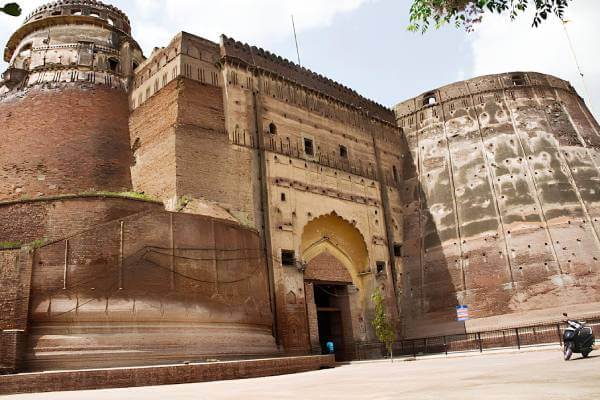Qila Mubarak, nestled in the heart of Bathinda, Punjab, India, stands as a testament to the ages. This historical marvel, revered as a national treasure, is diligently cared for by the Archaeological Survey of India. Its origins trace back to a remarkable span from 1100 to 1200 AD, making it the oldest fort still standing in India. Within these ancient walls, the poignant tale of Razia Sultan, the trailblazing woman who ascended the Delhi throne, unfolds. It was within these very confines that she found herself imprisoned and ultimately dethroned after her defeat.
The very bricks that constitute this fort hearken back to the era of the Kushana, when Emperor Kanishka held sway over Northern India and Bactria. Legend has it that it was Raja Dab, alongside Emperor Kanishka, who laid the foundation stones of this enduring bastion. In the latter part of the 10th Century, the fort fell under the dominion of Jayapala, a ruler hailing from the Hindu Shahi dynasty.

Architecture
The Imperial Gazetteer of India eloquently describes the fort’s grandeur, boasting an impressive array of 36 bastions and soaring to a height of approximately 118 feet. This majestic edifice, visible for miles around, stood as a prominent landmark in the region.
History
The genesis of Quila Mubarak Bathinda can be attributed to the visionary Raja Dab, who undertook its construction between 90-110 AD. Raja Dab, progenitor of Vena Pal, conceived of this stronghold as a bulwark against potential Hun invasions into Emperor Kanishka’s realm. Over the ensuing centuries, the fort witnessed a tapestry of transformations, orchestrated by the various rulers who held sway in the area.
Within these ancient walls, the indomitable spirit of Razia Sultana, the inaugural Empress of Delhi, was ensnared. The annals of Hindu chronicles from Kashmir reverberate with references to Qila Mubarak, identifying it as Jaipal’s seat of power, ultimately seized by Mahmud of Ghazni. In historical narratives of the early Muhammadan era, Bhatinda emerges as Batrinda, at times mistakenly transcribed as Tabarhind.
Throughout the annals of time, this fortress received successive enhancements under the auspices of the Mughal Empire, finding its zenith during the vibrant reign of the dynamic Mughal Emperor Akbar. It was in the year 1754 that Maharaja Ala Singh of the Patiala state triumphed in the conquest of Bhatinda, etching another chapter in the storied legacy of this venerable stronghold.



